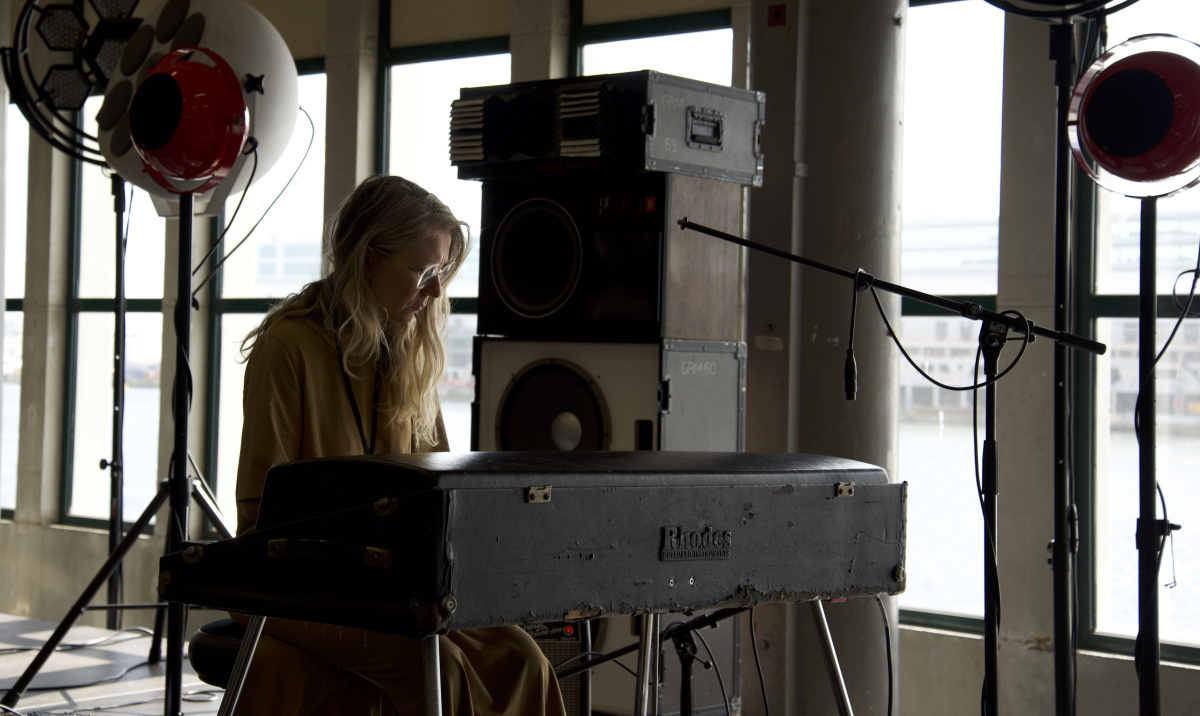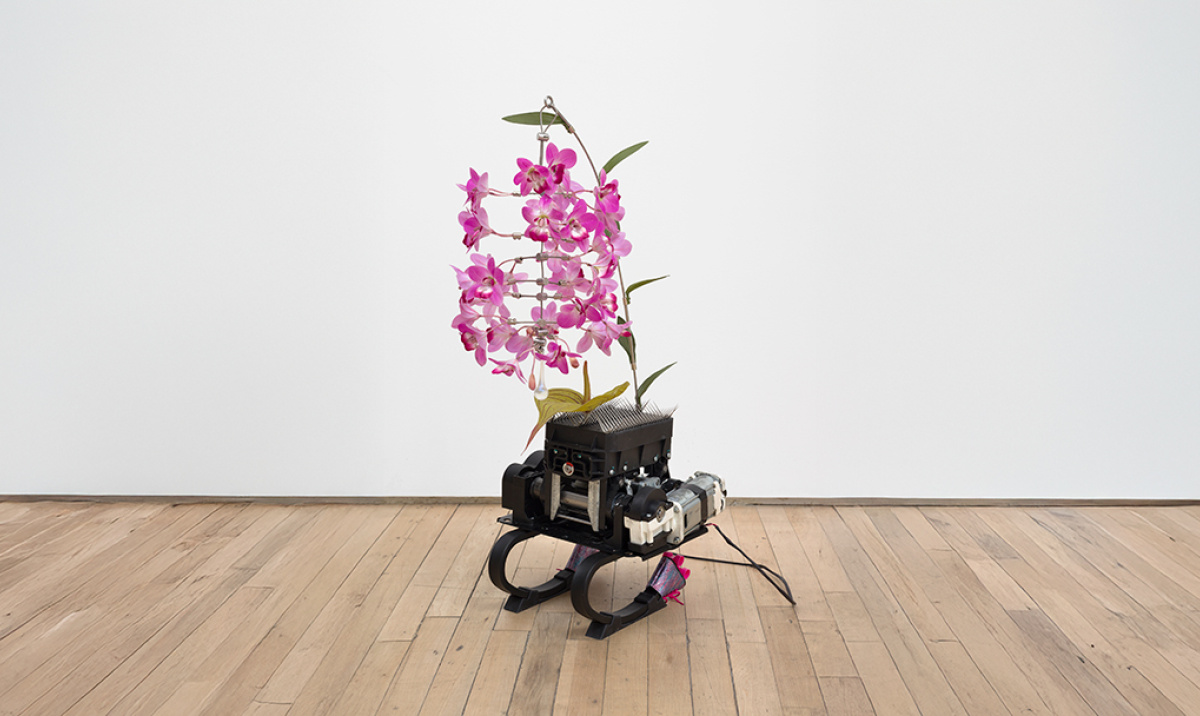Bemis Center for Contemporary Arts operates on a land that has been a site of human activity for thousands of years. This site was the territory of the UmonHon (Omaha), Ponca, Pawnee, Otoe, Missouri, and the Ioway peoples. UmonHon means “upstream,” a name marking the tribe’s settlement location on the banks of the Missouri River. Nebraska’s name is derived from the word “Nibthaska” meaning “flatwater” in the UmonHon language. In 1854, the UmonHon tribe was led to believe that they were securing U.S. protection by signing a treaty, giving up the land that now makes up the city of Omaha. Through several broken treaties, the UmonHon have a reservation one hour north of Omaha.
Bemis Center for Contemporary Arts operates on a land that has been a site of human activity for thousands of years. This site was the territory of the UmonHon (Omaha), Ponca, Pawnee, Otoe, Missouri, and the Ioway peoples. UmonHon means “upstream,” a name marking the tribe’s settlement location on the banks of the Missouri River. Nebraska’s name is derived from the word “Nibthaska” meaning “flatwater” in the UmonHon language. In 1854, the UmonHon tribe was led to believe that they were securing U.S. protection by signing a treaty, giving up the land that now makes up the city of Omaha. Through several broken treaties, the UmonHon have a reservation one hour north of Omaha.
Bemis Center for Contemporary Arts operates on a land that has been a site of human activity for thousands of years. This site was the territory of the UmonHon (Omaha), Ponca, Pawnee, Otoe, Missouri, and the Ioway peoples. UmonHon means “upstream,” a name marking the tribe’s settlement location on the banks of the Missouri River. Nebraska’s name is derived from the word “Nibthaska” meaning “flatwater” in the UmonHon language. In 1854, the UmonHon tribe was led to believe that they were securing U.S. protection by signing a treaty, giving up the land that now makes up the city of Omaha. Through several broken treaties, the UmonHon have a reservation one hour north of Omaha.
Bemis Center for Contemporary Arts operates on a land that has been a site of human activity for thousands of years. This site was the territory of the UmonHon (Omaha), Ponca, Pawnee, Otoe, Missouri, and the Ioway peoples. UmonHon means “upstream,” a name marking the tribe’s settlement location on the banks of the Missouri River. Nebraska’s name is derived from the word “Nibthaska” meaning “flatwater” in the UmonHon language. In 1854, the UmonHon tribe was led to believe that they were securing U.S. protection by signing a treaty, giving up the land that now makes up the city of Omaha. Through several broken treaties, the UmonHon have a reservation one hour north of Omaha.
Bemis Center for Contemporary Arts operates on a land that has been a site of human activity for thousands of years. This site was the territory of the UmonHon (Omaha), Ponca, Pawnee, Otoe, Missouri, and the Ioway peoples. UmonHon means “upstream,” a name marking the tribe’s settlement location on the banks of the Missouri River. Nebraska’s name is derived from the word “Nibthaska” meaning “flatwater” in the UmonHon language. In 1854, the UmonHon tribe was led to believe that they were securing U.S. protection by signing a treaty, giving up the land that now makes up the city of Omaha. Through several broken treaties, the UmonHon have a reservation one hour north of Omaha.
Bemis Center for Contemporary Arts operates on a land that has been a site of human activity for thousands of years. This site was the territory of the UmonHon (Omaha), Ponca, Pawnee, Otoe, Missouri, and the Ioway peoples. UmonHon means “upstream,” a name marking the tribe’s settlement location on the banks of the Missouri River. Nebraska’s name is derived from the word “Nibthaska” meaning “flatwater” in the UmonHon language. In 1854, the UmonHon tribe was led to believe that they were securing U.S. protection by signing a treaty, giving up the land that now makes up the city of Omaha. Through several broken treaties, the UmonHon have a reservation one hour north of Omaha.
Bemis Center for Contemporary Arts operates on a land that has been a site of human activity for thousands of years. This site was the territory of the UmonHon (Omaha), Ponca, Pawnee, Otoe, Missouri, and the Ioway peoples. UmonHon means “upstream,” a name marking the tribe’s settlement location on the banks of the Missouri River. Nebraska’s name is derived from the word “Nibthaska” meaning “flatwater” in the UmonHon language. In 1854, the UmonHon tribe was led to believe that they were securing U.S. protection by signing a treaty, giving up the land that now makes up the city of Omaha. Through several broken treaties, the UmonHon have a reservation one hour north of Omaha.
Bemis Center for Contemporary Arts operates on a land that has been a site of human activity for thousands of years. This site was the territory of the UmonHon (Omaha), Ponca, Pawnee, Otoe, Missouri, and the Ioway peoples. UmonHon means “upstream,” a name marking the tribe’s settlement location on the banks of the Missouri River. Nebraska’s name is derived from the word “Nibthaska” meaning “flatwater” in the UmonHon language. In 1854, the UmonHon tribe was led to believe that they were securing U.S. protection by signing a treaty, giving up the land that now makes up the city of Omaha. Through several broken treaties, the UmonHon have a reservation one hour north of Omaha.
Bemis Center for Contemporary Arts operates on a land that has been a site of human activity for thousands of years. This site was the territory of the UmonHon (Omaha), Ponca, Pawnee, Otoe, Missouri, and the Ioway peoples. UmonHon means “upstream,” a name marking the tribe’s settlement location on the banks of the Missouri River. Nebraska’s name is derived from the word “Nibthaska” meaning “flatwater” in the UmonHon language. In 1854, the UmonHon tribe was led to believe that they were securing U.S. protection by signing a treaty, giving up the land that now makes up the city of Omaha. Through several broken treaties, the UmonHon have a reservation one hour north of Omaha.
Bemis Center for Contemporary Arts operates on a land that has been a site of human activity for thousands of years. This site was the territory of the UmonHon (Omaha), Ponca, Pawnee, Otoe, Missouri, and the Ioway peoples. UmonHon means “upstream,” a name marking the tribe’s settlement location on the banks of the Missouri River. Nebraska’s name is derived from the word “Nibthaska” meaning “flatwater” in the UmonHon language. In 1854, the UmonHon tribe was led to believe that they were securing U.S. protection by signing a treaty, giving up the land that now makes up the city of Omaha. Through several broken treaties, the UmonHon have a reservation one hour north of Omaha.
Bemis Center for Contemporary Arts facilitates the creation, presentation, and understanding of contemporary art through an international residency program, exhibitions, and educational programs.
Current Residents
See all residentsAs an artist-centric nonprofit, we honor and respect the critical role artists play in our society. We value creativity, trust, courage, diversity, acceptance, and the open exchange of ideas and worldviews.
GET MORE ART IN YOUR INBOX
Bemis Center for
Contemporary Arts
Contemporary Arts
724 S. 12th Street
Omaha, NE 68102
402.341.7130
info@bemiscenter.org
Closed Now
Mon
Closed
Tue
Closed
Wed
Closed
Thu
Closed
Fri
Closed
Sat
Closed
Sun
Closed





